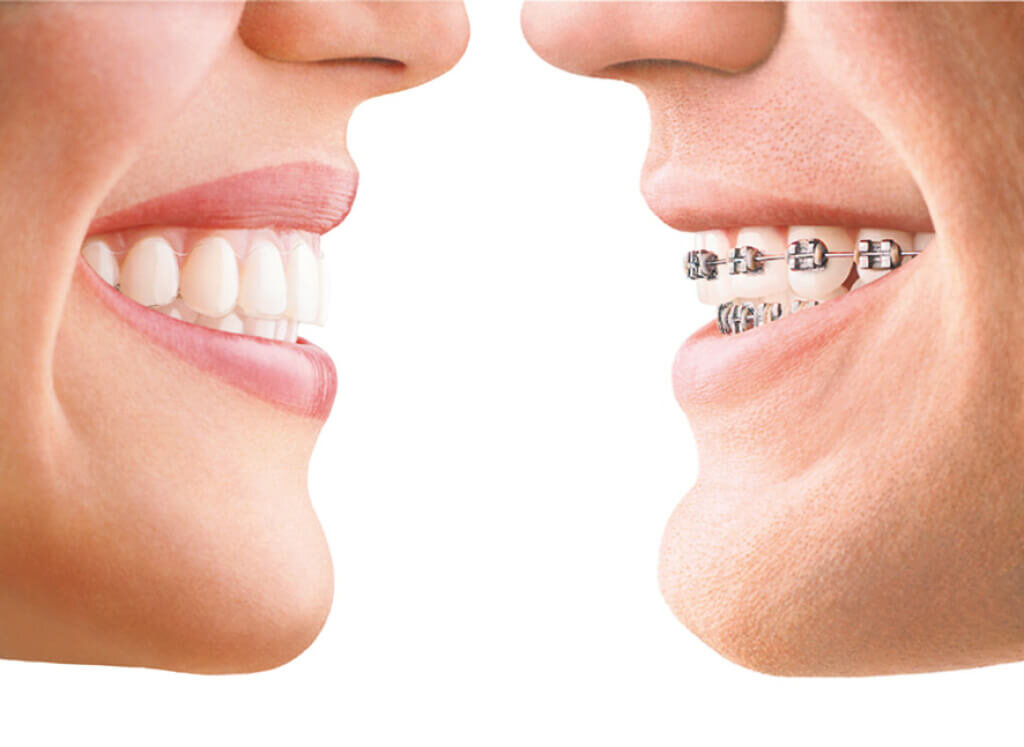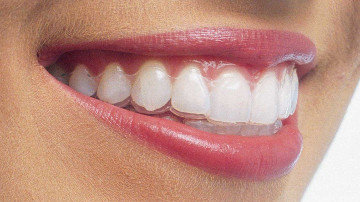Top Reasons to Choose Invisalign Over Other Orthodontic Treatments
Top Reasons to Choose Invisalign Over Other Orthodontic Treatments
Blog Article
Invisalign vs. Standard Braces: Which Alternative Is Right for You?
When considering orthodontic treatment, the option in between Invisalign and standard braces presents several essential variables that warrant careful evaluation. Invisalign uses a very discreet option with detachable aligners, while typical dental braces provide an extra visible yet reliable option for severe imbalance.
Introduction of Therapy Choices

In contrast, traditional dental braces include steel brackets and cables that are bound to the teeth. This approach applies constant pressure over time to accomplish positioning. While reliable for complex orthodontic concerns, conventional dental braces need normal brows through for changes and can pose difficulties in maintaining dental health as a result of the trouble of cleaning up about wires and brackets.
Both alternatives have their advantages, and the selection typically pivots on certain oral conditions, way of living choices, and patient conformity. Inevitably, seeking advice from an orthodontic specialist is critical for determining the most suitable therapy plan tailored to private demands. Comprehending the subtleties of each alternative can substantially affect the total success of orthodontic therapy.
Aesthetic Considerations
A considerable factor affecting the selection in between Invisalign and conventional braces is the aesthetic charm each treatment offers. Invisalign aligners are crafted from clear plastic, making them basically undetectable when used.
In comparison, typical braces include steel brackets and wires, which can be a lot more noticeable. While innovations in orthodontic innovation have brought about the advancement of smaller brackets and colored elastics, standard braces still maintain a more obvious profile. For some individuals, the exposure of dental braces might hinder them from seeking required treatment.
Ultimately, the selection between Invisalign and standard dental braces may rest on personal preferences relating to visual appeals. Patients who prioritize discernment frequently lean towards Invisalign, while those who are less worried about visibility might choose traditional dental braces. Recognizing the aesthetic effects of each alternative is important for making an educated choice that aligns with one's lifestyle and choices.
Comfort and Convenience

In terms of convenience, Invisalign aligners are detachable, allowing individuals to enjoy their favorite foods without constraint and keep optimum oral hygiene. Cleaning and flossing are simplified, as the aligners can be obtained throughout these routines, whereas standard braces need mindful maneuvering around brackets and cords.
In comparison, conventional dental braces necessitate regular modifications, making them much less convenient for those with busy schedules. In general, the comfort and ease of Invisalign make it an appealing choice for many people looking for orthodontic treatment.
Treatment Period and Effectiveness
While both Invisalign and typical dental braces work in fixing oral misalignments, the period of treatment can vary considerably between both options. Generally, Invisalign therapy can take anywhere from 12 to 18 months, depending upon the intricacy of the situation. The clear aligners function by gradually shifting teeth right into their preferred placements, and routine follow-ups with an orthodontist assistance make certain progress remains on course.
In comparison, traditional dental braces often require a longer commitment, typically varying from 18 months to three years. This is because of their fixed nature and using braces and cables, which can be extra efficient pop over to this web-site for extreme misalignments and complex situations (Invisalign). The treatment performance of standard braces is well-documented, as they permit accurate modifications and greater control over tooth movement
Eventually, the choice between Invisalign and standard braces might rest on both the expected therapy duration and the details dental concerns handy. Consulting with an orthodontist is crucial, as they can give tailored referrals based upon private needs, making sure the picked method lines up with desired durations and end results.
Expense Contrast and Insurance Coverage Alternatives
Price plays a substantial role in the decision-making procedure for people considering orthodontic treatment, whether choosing Invisalign or conventional dental braces. Usually, the expense of Invisalign arrays from $3,000 to $8,000, while traditional dental braces usually cost in between $2,000 and $6,000. Variables affecting these expenses consist of the complexity of the instance, the duration of treatment, and geographical area.
Insurance policy coverage can considerably impact out-of-pocket expenses. Lots of dental insurance strategies supply partial protection for orthodontic treatments, but the specifics can vary widely. It is critical for individuals to evaluate their insurance plans to establish the extent of coverage for either alternative. Normally, typical dental braces might be a lot more often covered by insurance coverage strategies contrasted to Invisalign, which some insurance firms categorize as a cosmetic treatment.
Furthermore, a number of orthodontic techniques provide flexible repayment plans, making both therapy options more accessible. Individuals must ask about prospective financing choices and discounts for in advance settlements. Examining the overall expense, consisting of insurance coverage advantages and layaway plan, is essential for making an informed decision that aligns with both aesthetic preferences and budget plan factors to resource consider.

Conclusion
In summary, the selection between Invisalign and traditional braces hinges on multiple elements, consisting of aesthetic preferences, convenience, therapy period, and cost. Invisalign supplies these details a discreet, removable choice that assists in dental hygiene and dietary adaptability, while conventional dental braces might be extra suitable for intricate oral issues and usually come with a reduced rate factor. Eventually, consultation with an orthodontist is important to analyze individual scenarios and determine the most ideal treatment choice for accomplishing optimum dental alignment.
When taking into consideration orthodontic treatment, the choice between Invisalign and typical braces provides a number of essential elements that warrant cautious analysis.Contrasting Invisalign and standard dental braces exposes unique treatment choices for orthodontic improvement.While both Invisalign and traditional braces are effective in correcting dental misalignments, the period of treatment can differ dramatically between the 2 alternatives.Price plays a considerable function in the decision-making process for individuals thinking about orthodontic treatment, whether deciding for Invisalign or typical braces.In recap, the option in between Invisalign and typical braces pivots on numerous aspects, consisting of visual preferences, convenience, treatment duration, and expense.
Report this page